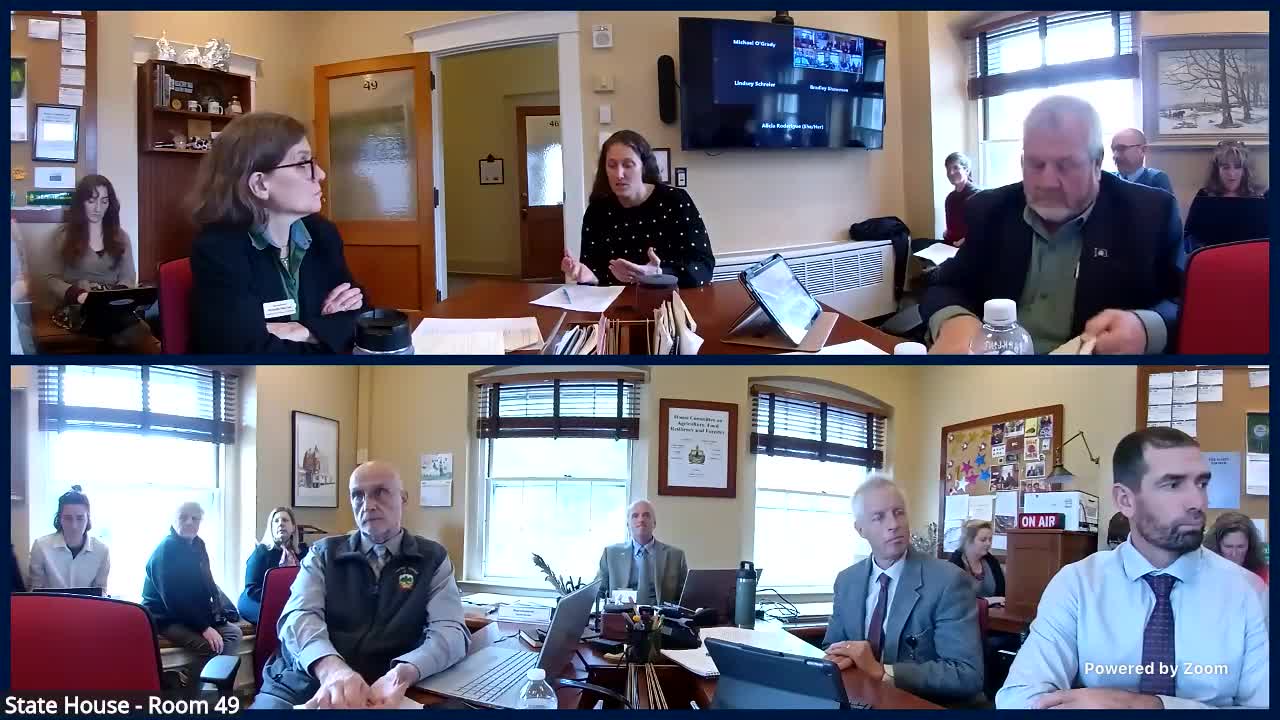Bridges to Health and Union Extension describe rising service needs as families settle on Vermont farms
November 14, 2025 | Agriculture, Food Resiliency, & Forestry, HOUSE OF REPRESENTATIVES, Committees, Legislative , Vermont
This article was created by AI summarizing key points discussed. AI makes mistakes, so for full details and context, please refer to the video of the full meeting. Please report any errors so we can fix them. Report an error »

Program leaders described expanded services and rising needs among farmworker families across Vermont, including more children living on farms and increased demand for wraparound supports.
Naomi, a program lead with Bridges to Health, said the outreach program uses bilingual community health workers to coordinate health promotion, education and access for immigrant and migrant workers statewide. "Over the past three years we've worked with 1,128 farm workers on 167 farms and we coordinate almost 3,000 appointments," she said, adding that 35% of coordinated appointments for farmworkers and family members lacked reliable transportation.
Bridges staff reported two main worker groups: year‑round workers (often dairy workers and increasingly families) and seasonal H‑2A workers (about 660 positions in recent years). Naomi warned that the removal of repayment caps for premium tax credits and rising concerns about enforcement are deterring some seasonal workers from signing up for coverage and may reduce enrollment.
S. Bay Hamilton, program lead for farmworker education at University Extension, summarized the migrant education program (federal Title I‑C) and the farmworker education hub funded through USDA grants. Hamilton said the program served about 120 school‑age children last year and described substantial work to help families with enrollment, tutoring and transportation for preschool and after‑school supports.
Both program leads asked the committee for continued attention to funding stability and for more time to brief the committee in January so lawmakers can better understand system needs and program timelines. Committee members requested clearer eligibility charts and said they would schedule follow‑up briefings.
Naomi, a program lead with Bridges to Health, said the outreach program uses bilingual community health workers to coordinate health promotion, education and access for immigrant and migrant workers statewide. "Over the past three years we've worked with 1,128 farm workers on 167 farms and we coordinate almost 3,000 appointments," she said, adding that 35% of coordinated appointments for farmworkers and family members lacked reliable transportation.
Bridges staff reported two main worker groups: year‑round workers (often dairy workers and increasingly families) and seasonal H‑2A workers (about 660 positions in recent years). Naomi warned that the removal of repayment caps for premium tax credits and rising concerns about enforcement are deterring some seasonal workers from signing up for coverage and may reduce enrollment.
S. Bay Hamilton, program lead for farmworker education at University Extension, summarized the migrant education program (federal Title I‑C) and the farmworker education hub funded through USDA grants. Hamilton said the program served about 120 school‑age children last year and described substantial work to help families with enrollment, tutoring and transportation for preschool and after‑school supports.
Both program leads asked the committee for continued attention to funding stability and for more time to brief the committee in January so lawmakers can better understand system needs and program timelines. Committee members requested clearer eligibility charts and said they would schedule follow‑up briefings.
View the Full Meeting & All Its Details
This article offers just a summary. Unlock complete video, transcripts, and insights as a Founder Member.
✓
Watch full, unedited meeting videos
✓
Search every word spoken in unlimited transcripts
✓
AI summaries & real-time alerts (all government levels)
✓
Permanent access to expanding government content
30-day money-back guarantee
